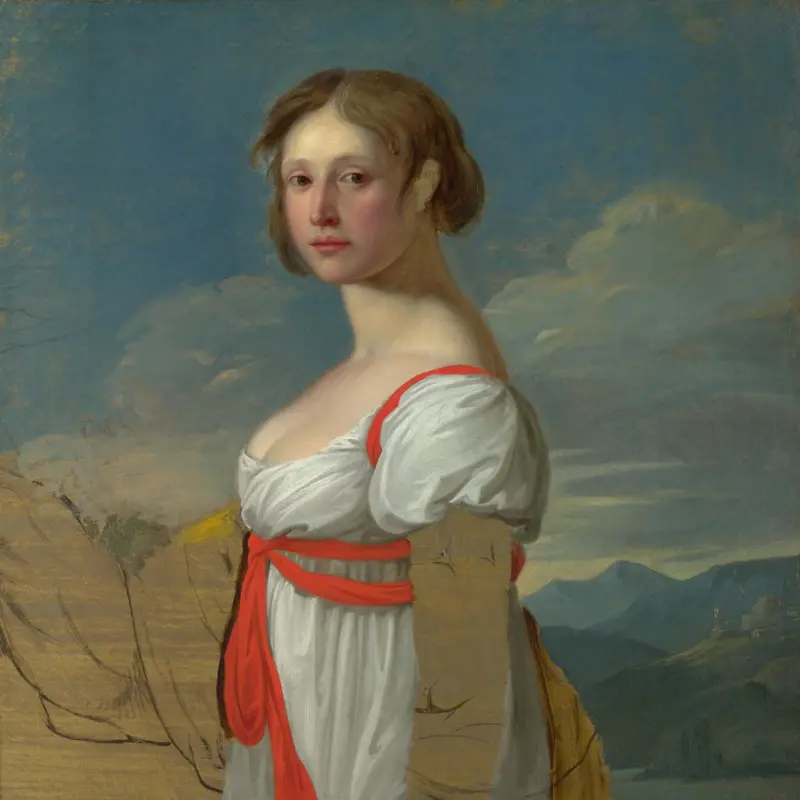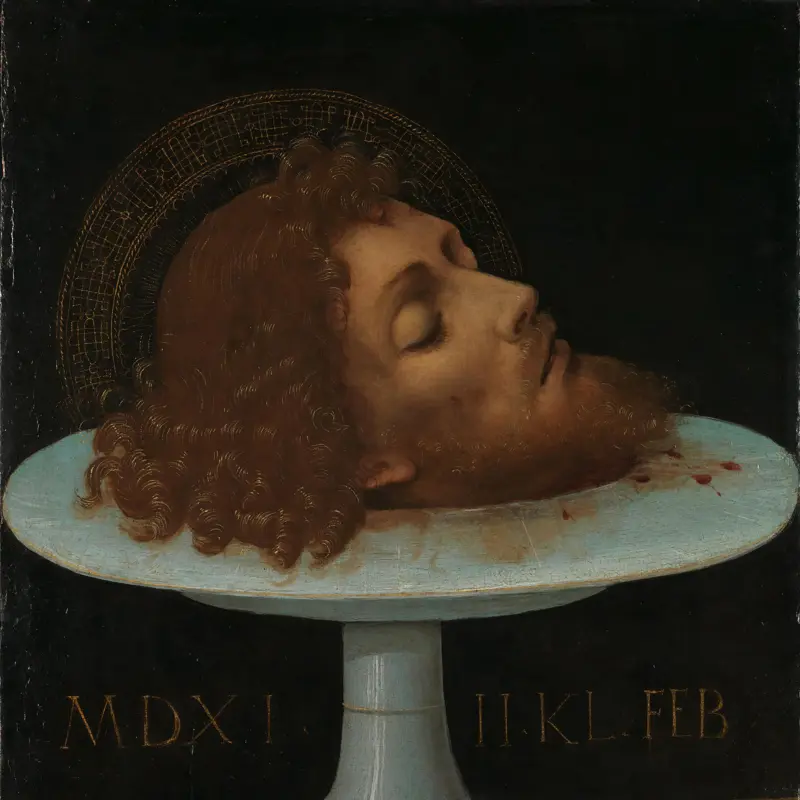Italian, 'A Dead Soldier', 17th century
About the work
Overview
A young soldier lies dead in a barren landscape, the sky growing dark around him. A deathly pallor tinges his face and his left hand rests on the hilt of his sword, as if to protect it. His bony, oversized right hand, the colour of decaying flesh, lies prominently on his chest. The man’s armour glints in the fading light, and a silk bow hangs limply from his shoe.
A swirl of blue smoke overhead does little to relieve the sense of melancholy. A lamp hangs from a leafless branch; a breeze has set it swinging and its flame has gone out. A skull and bones lie to the left, while close to the corpse bubbles disturb the surface of a small water pool. These bubbles will soon burst, leaving no trace, and, together with the extinguished flame, they are to be considered vanitas symbols, alluding to the brevity of human life and the suddenness of death.
Key facts
Details
- Full title
- A Dead Soldier
- Artist
- Italian
- Date made
- 17th century
- Medium and support
- oil on canvas
- Dimensions
- 104.8 × 167 cm
- Acquisition credit
- Bought, 1865
- Inventory number
- NG741
- Location
- Not on display
- Collection
- Main Collection
Provenance
Additional information
Text extracted from the ‘Provenance’ section of the catalogue entry in Michael Levey, ‘National Gallery Catalogues: The Seventeenth and Eighteenth Century Italian Schools’, London 1986; for further information, see the full catalogue entry.
Exhibition history
-
2009Mark Wallinger Curates: The Russian LinesmanHayward Gallery18 February 2009 - 4 May 2009Leeds City Art Gallery16 May 2009 - 28 June 2009Glynn Vivian Art Gallery18 July 2009 - 20 September 2009
-
2010Close Examination: Fakes, Mistakes and DiscoveriesThe National Gallery (London)30 June 2010 - 12 September 2010
-
2015Times of MelancholyMuseo Nacional de Escultura2 July 2015 - 13 October 2015Museu de Bellas Arts de València10 November 2015 - 6 February 2016
Bibliography
-
1986Levey, Michael, National Gallery Catalogues: The Seventeenth and Eighteenth Century Italian Schools, London 1986
-
2001
C. Baker and T. Henry, The National Gallery: Complete Illustrated Catalogue, London 2001
About this record
If you know more about this work or have spotted an error, please contact us. Please note that exhibition histories are listed from 2009 onwards. Bibliographies may not be complete; more comprehensive information is available in the National Gallery Library.















